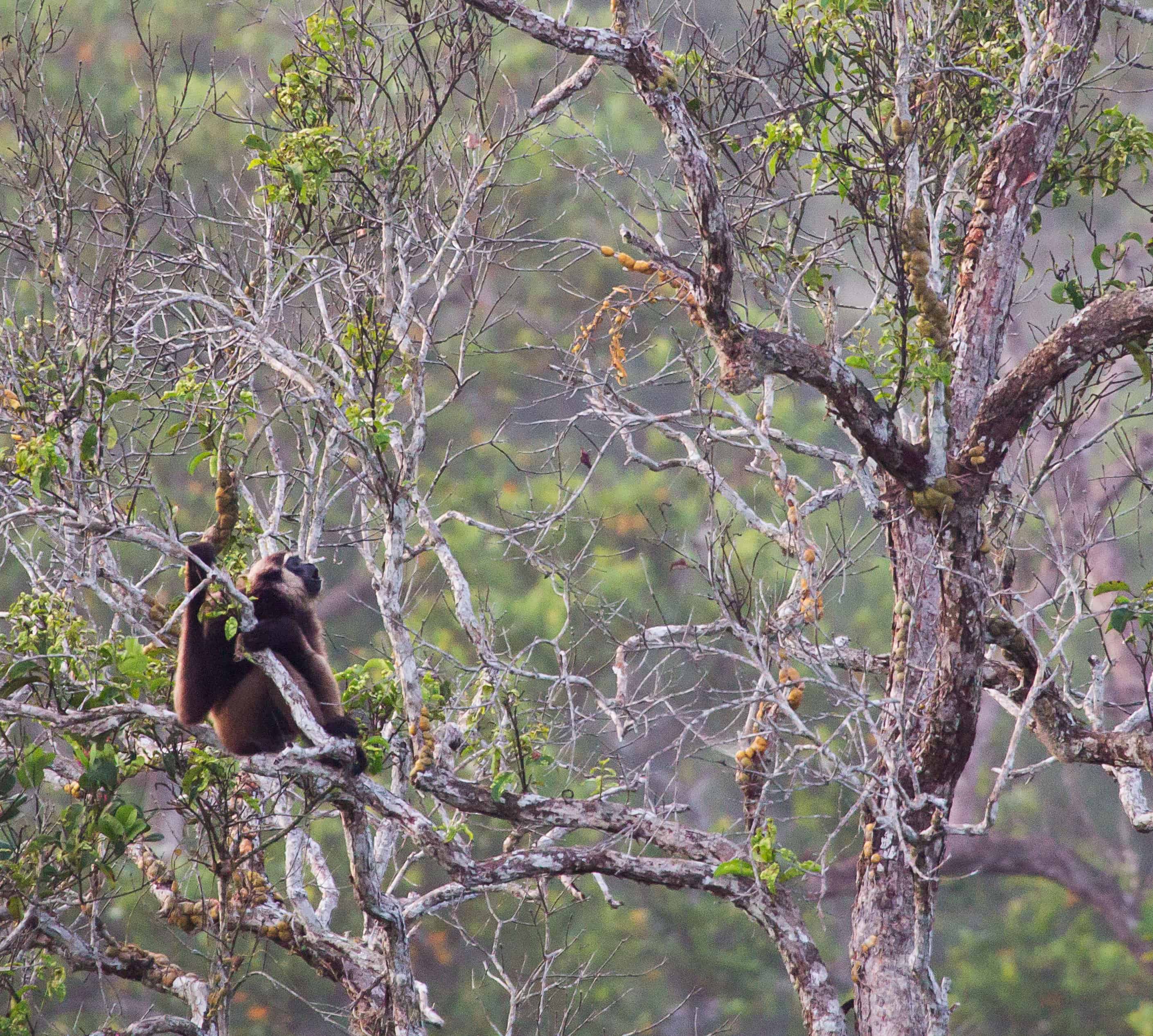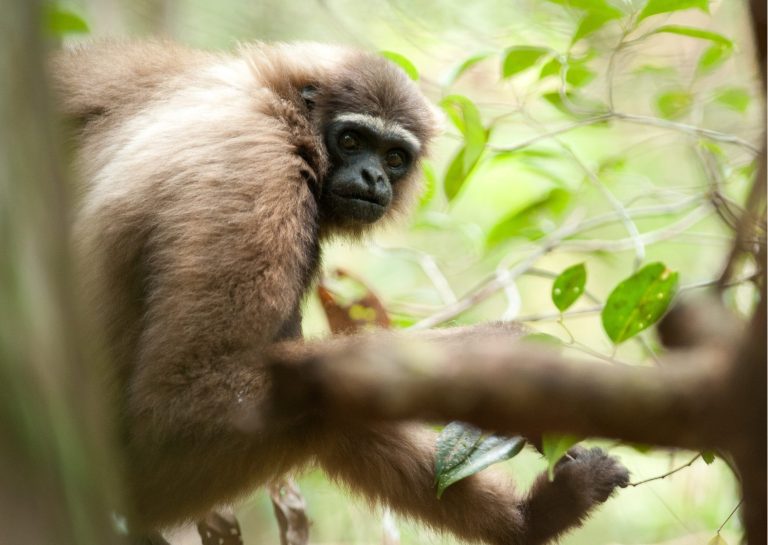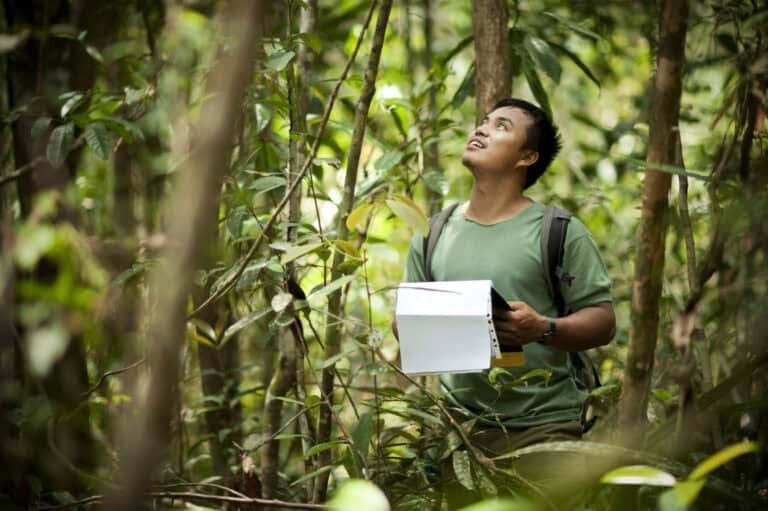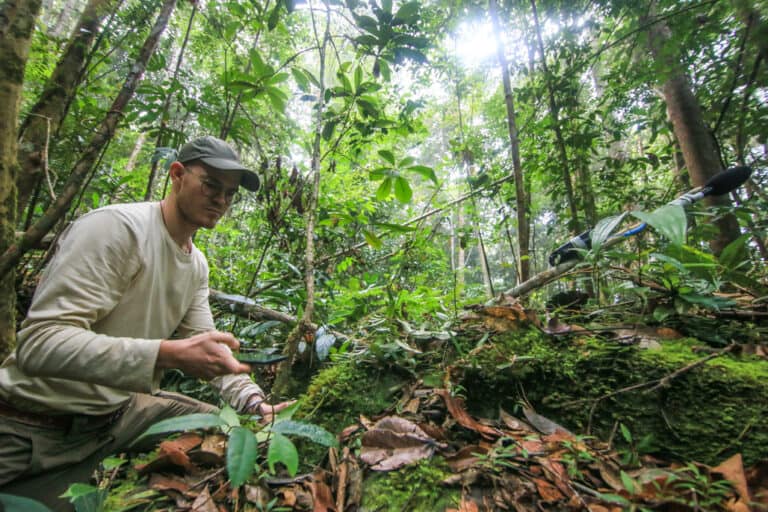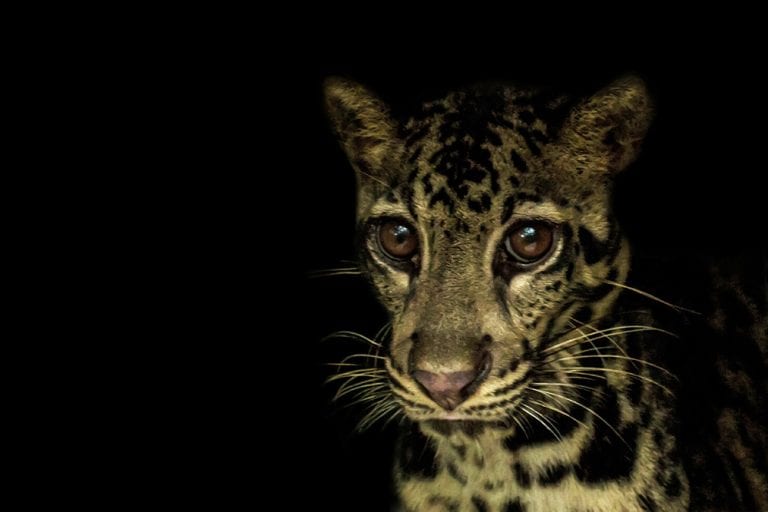Written by Dr. Susan Cheyne (BNF International Co-director)
In a new paper published open access in PLOS ONE we present data from 8 years of gibbon research from Borneo Nature Foundation. This is one of the longest-running gibbon conservation research projects in the world. Gibbons are highly territorial and have two key areas within these territories. The core area in which we find all sleeping trees and the trees from which the gibbons’ duet and the wider home range (HR) which has varying levels of overlap with neighbouring gibbon groups. The core area is strenuously defended, with the wider HR being more of a shared area between neighbouring groups. We present ranging and movement data on four wild gibbon groups from January 2010 to July 2018. Global Positioning System (GPS) data were collected every 5 mins on habituated groups in the Natural Laboratory of Peat-swamp Forest (NLPSF), a special zone within the Sebangau National Park, Central Kalimantan, Indonesia resulting in 35,521 waypoints.
Home-ranges ranged from 58.74 – 147.75 ha with a mean of 95.7 ± SD 37.75 ha, the highest of comparable Hylobates species. Core-range size ranged from 20.7 – 51.31 ha with a mean size of 31.7 ± SD 13.76 ha. Gibbons had consistent site fidelity for their home- and core ranges; percentage overlap ranged from 4.3 23.97% with a mean 16.5 ± SD 8.65% overlap in home-range area. Core ranges did not overlap with the exception of two groups, in which a 0.64 ha (2.69%) overlap occurred. Unsurprisingly forest loss from fire does affect the location of the HR of the impacted group but does not appear to affect adjacent groups, though more data are needed on this. Understanding the complex use of space of these territorial animals is important in assessing both carrying capacity for wild populations and understanding how reintroduced gibbon pairs will establish their core and HR.
Hunting, fire, forest clearance and forest fragmentation are all impacting Borneo’s gibbons. Gibbons need large areas to survive and linking forests and reducing fragmentation is the key to their conservation. Landscapes and connectivity depend on collaboration between local and international governments, communities, conservation organizations and researchers. As we understand more about gibbon habitat use we will begin to see how best to connect the remaining forest.

Photo by Dr. Fan | BNF | UPT LLG CIMTROP

